EISENHOWER IN LOUISIANA 1941
BY RICKEY ROBERTSON
One of the major aspects of the Louisiana Maneuvers of 1941 was to test all the officers throughout the U.S. Army in their leadership skills. Every officer, from general officers down to platoon leaders were to be evaluated during the large scale maneuvers. Many officers did not excel and were removed from their commands. Many were outstanding and began to rise in rank as soon as the maneuvers ended. One such officer who came to Louisiana and excelled was a colonel named Dwight D. Eisenhower.
The army had first entered Louisiana in 1940 and one thing that was immediately evident was the lack of equipment, vehicles, and supplies. Soldiers used sticks for rifles, beer cans for bullets, there was such a shortage of equipment that World War I items were issued even if it was in poor condition, there was a severe shortage of vehicles, and there was such as shortage of cavalry mounts that purchasing agents came throughout west central Louisiana and East Texas buying and "renting" horses right off the farm to fill in for trained cavalry mounts. But most important it was found that there needed to be a base for the upcoming maneuvers in 1941 for all the many units that would be operating in the Sabine Maneuver Area. A very able Army officer was assigned the task of finding the best location for this camp.
In September 1940 Colonel Dwight Eisenhower arrived in Leesville on board the "Kay See" car, Kansas City Southern Railroad's most luxurious railcar. Colonel Eisenhower, born in Dennison, Texas in 1890, was a member of the West Point Class of 1915, and was very highly respected by the General Headquarters Staff in Washington, D.C. Colonel Eisenhower and three officers assigned to him arrived in Leesville and rested. The next day, Colonel Eisenhower, a Mr. Porter who provided horses for the group to ride, Marvin Beaver, Mayor Jean M. King of Leesville, and the army officers rode seven miles east of Leesville across the barren and cutover timberlands and stopped atop a mile long humpback ridge. Colonel Eisenhower dismounted and looked over the area. Due to an old football injury dating back to his days as a cadet at West Point, he used his walking stick continuously. As Colonel Eisenhower looked over the land he jammed his walking stick into the sandy soil and declared that "this is the location where the new camp will be built"! Colonel Eisenhower had just located the site for Camp Polk, La. Little did Colonel Eisenhower know but in less than a year he would return to Camp Polk and be a major player in the success of the Louisiana Maneuvers of 1941.
Dwight D. Eisenhower was still a colonel at the time of the Louisiana Maneuvers of 1941 with his star only beginning to rise. As a Regular Army Colonel he was Chief of Staff for the Third Army that was involved in the Louisiana Maneuvers. Eisenhower was so thorough and concise in both the planning of the maneuvers and during the actual battles that General Headquarters in Washington immediately saw his expertise. He continued with these duties after the maneuvers ended in September 1941 and in October 1941 was promoted to Brigadier General. By March 1942 he was promoted to Major General in charge of Army Operations at the War Department and in late 1942 was promoted to Commanding General of the United States Forces in Europe. He commanded Operation Torch in North Africa in 1942, and Operation Husky in Sicily in 1943. He became Supreme Allied Commander of all forces in Europe and commanded the largest invasion force and army in the world that landed in Normandy France on June 6, 1944. He was promoted to 5-star rank and stayed so till he retired.
Many legends of Dwight Eisenhower remain throughout the Natchitoches, Sabine, and Vernon Parish area. His skillful planning helped the Blue 3rd Army to attack the Red 2nd Army at Mt. Carmel and stop General George Patton's 2nd Armored Division's advance toward Peason Ridge. And after the battle, the late Eileen Addison Lombard, whose father ran Addison's Store right at the major crossroads during the Battle of Mt. Carmel, told me in an interview of how Colonel Eisenhower and other officers entering her father's store after the battle and talked with the Addison's before leaving to survey more of the battle site. And Colonel Eisenhower was known to have been in Many, La. where he and other high ranking officers gathered at the Vandegaer residence to discuss tactics. Colonel Eisenhower, tired and dusty, asked to take a bath at the Vandegaer residence. Another instance of Colonel Eisenhower being in Sabine Parish was out at Peason, La. Throughout the maneuvers the women all over the area were continuously making biscuits and frying chicken for the soldiers. At Peason a large headquarters had been set up by the Blue 3rd Army as it advanced toward Mt. Carmel. At a local home an officer approached the family and asked if the lady of the house would mind fixing breakfast for some officers at the headquarters. She fixed a big pan of biscuits, eggs, and fresh bacon right out of the smokehouse. In a short while the officers arrived and had this feast. The officers made small talk with the family while they ate and as they departed one of the officers slipped a $100.00 bill under his plate and thanked the hostess. This officer who appreciated the hospitality and meal was Colonel Dwight Eisenhower. And as they left they headed toward Mt. Carmel and the upcoming battle that was about to take place there.
After World War II, General Dwight Eisenhower followed in the footsteps of his old commander, General George C. Marshall , and entered into American politics . General Eisenhower was elected President of the United States in 1953 and served in that office until 1961 when he was succeeded by John F. Kennedy . President Eisenhower was known as one of our most able presidents. Do you think his planning and operational skills learned in the Louisiana Maneuvers carried over to his successful tenure in the Presidency? I think that it definitely had an impact on his rise to the 5-star general rank and into the Presidency. Experience always counts on how well a person can perform a job and Dwight Eisenhower had plenty of experience. On March 28, 1969 former General and President Dwight David Eisenhower passed away. He left a mark in American history, Army history, Louisiana history, and the history of the Louisiana Maneuvers. This is another great American who came through our area during the war who made such a great impact on the nation and the world. We remember Dwight David Eisenhower and the legends he left us right here in Natchitoches, Sabine, and Vernon Parishes.

Red Army Air Force planes flour bombing Blue Army troops at Addison's Store during the Battle of Mt. Carmel 1941. (Robertson Collection)
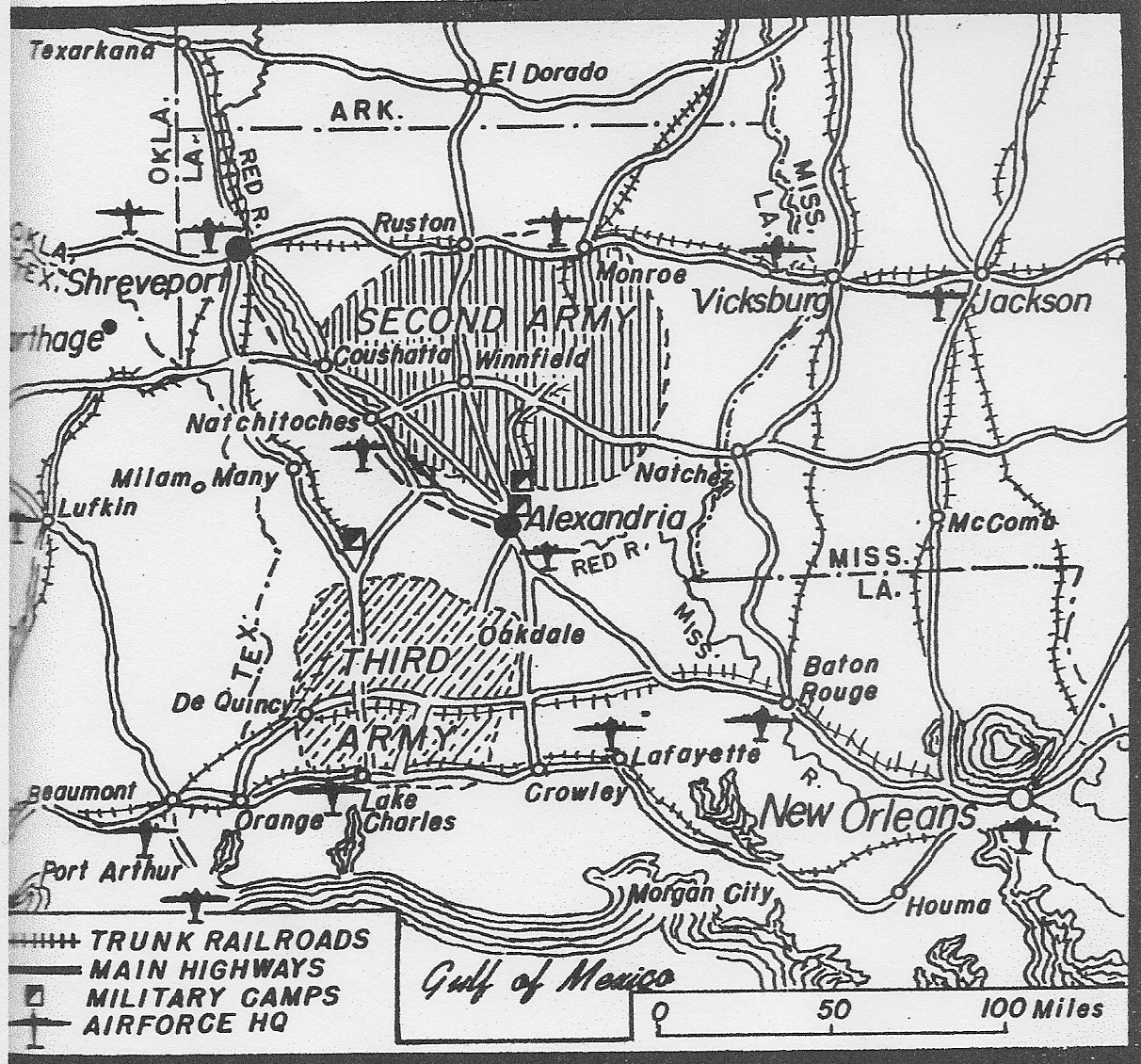
Map showing the locations of the Red 2nd Army and the Blue 3rd Armies during the Louisiana Maneuvers of 1941. (Robertson Collection)
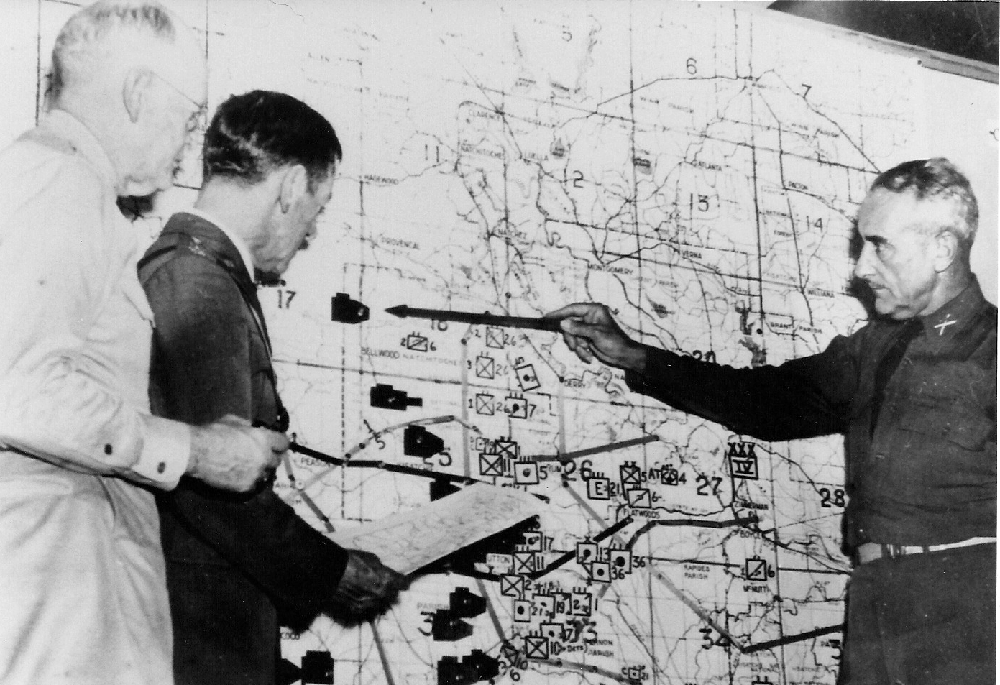
Pic0034 Colonel Dwight Eisenhower at left reviewing a map of troop locations at Camp Polk during the Louisiana Maneuvers. (Robertson Collection)
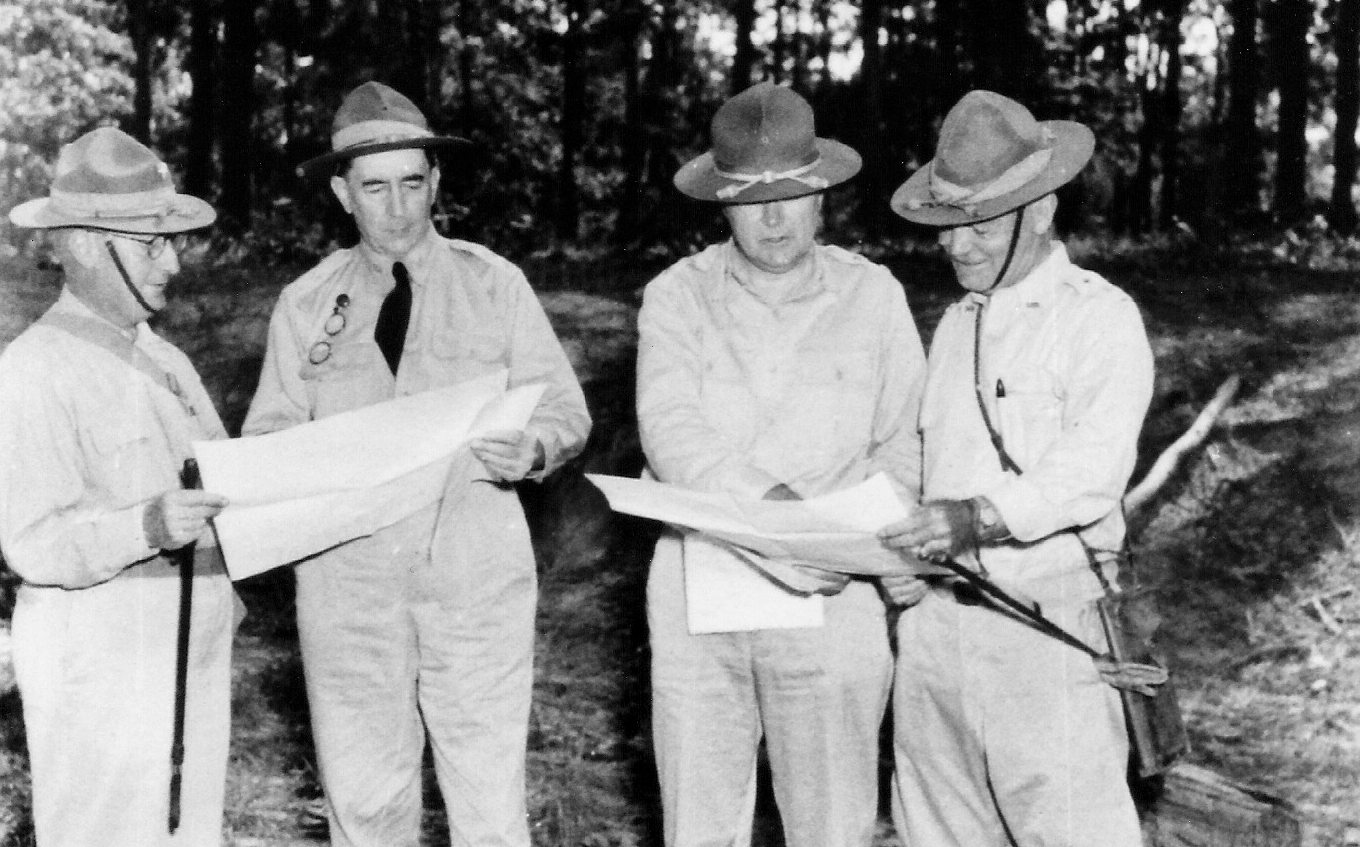
Colonel Dwight Eisenhower, right, with map case discussing tactics and troop dispositions after the Battle of Mt. Carmel. (Robertson Collection)
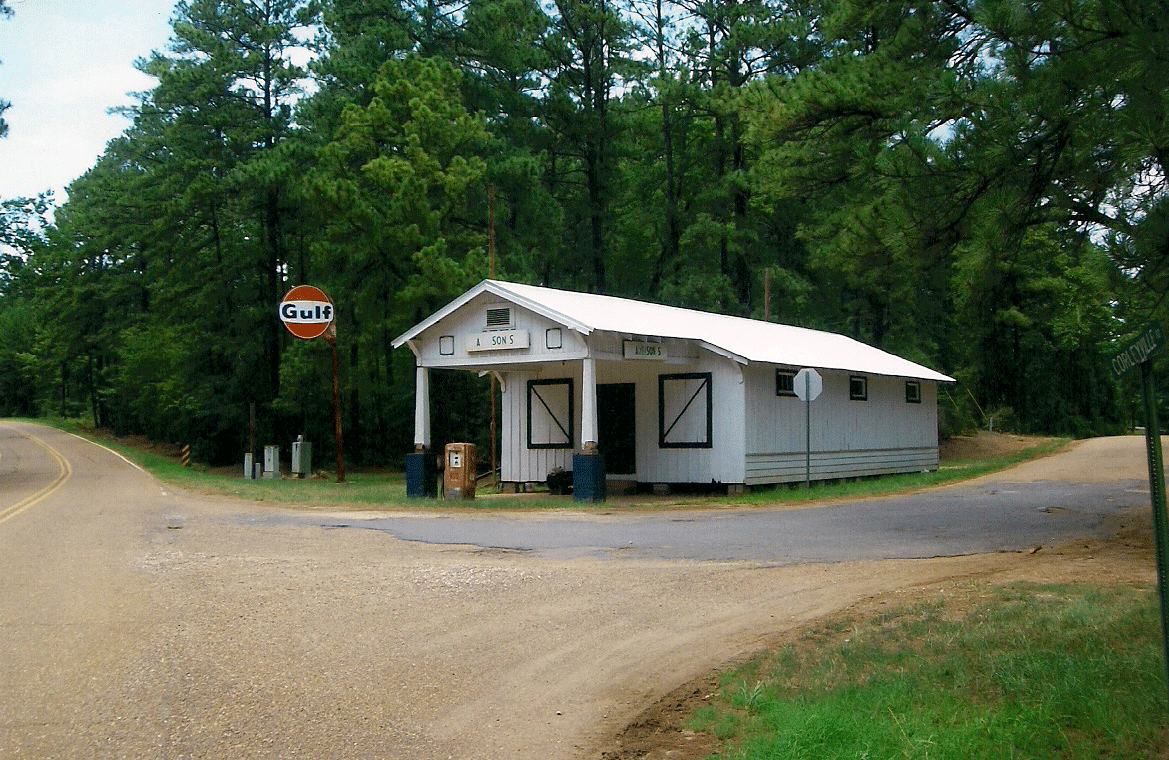
Addison's Store was right in the midst of the Battle of Mt. Carmel. Today it has been restored and this is how it looks now. Colonel Dwight Eisenhower stopped and went into the store and talked to the Addison Family. (Robertson Collection)
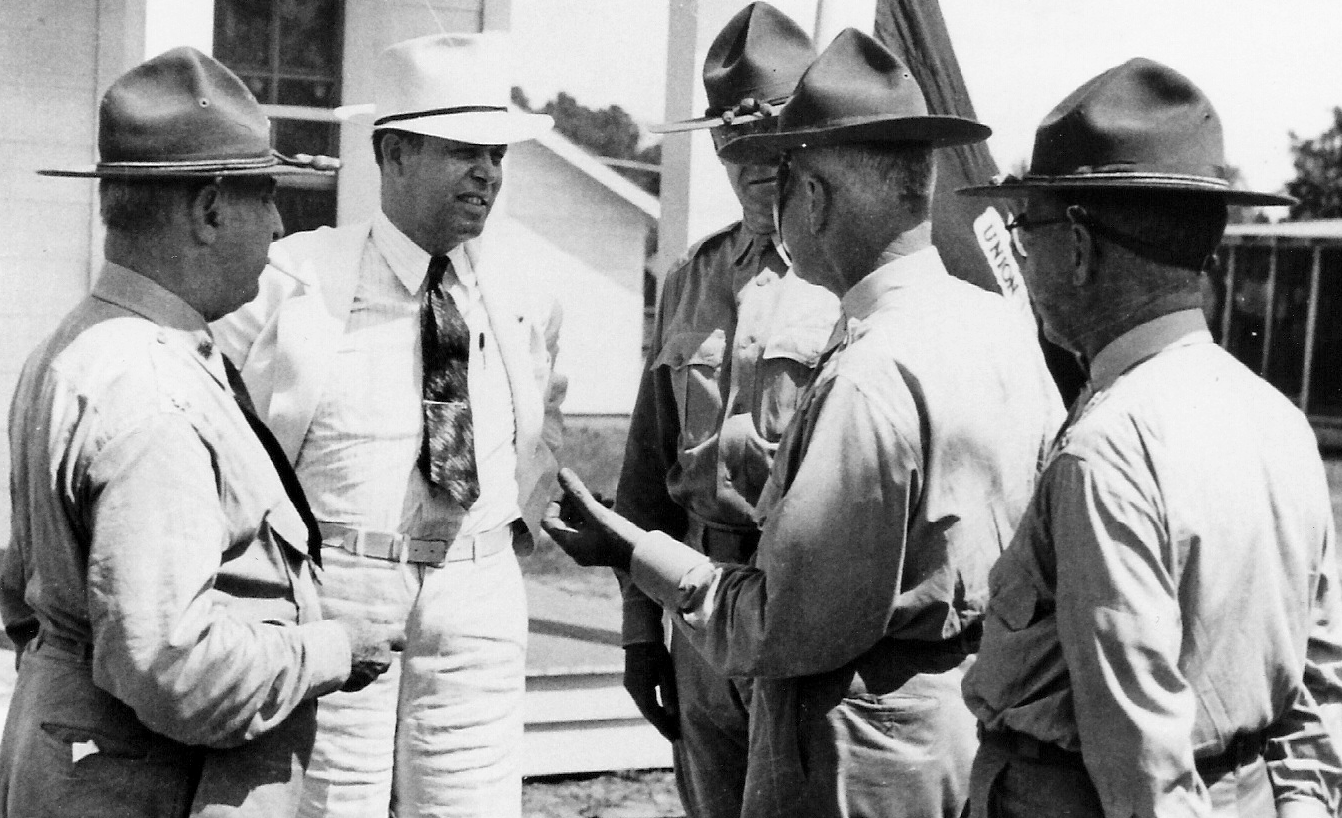
Colonel Eisenhower with hand extended and other officers talking to an unknown reporter during the Louisiana Maneuvers. (Robertson Collection)
.jpg)
General of the Army Dwight D. Eisenhower was Supreme Commander of all allied forces in World War II and later became President of the United States. (Robertson Collection)